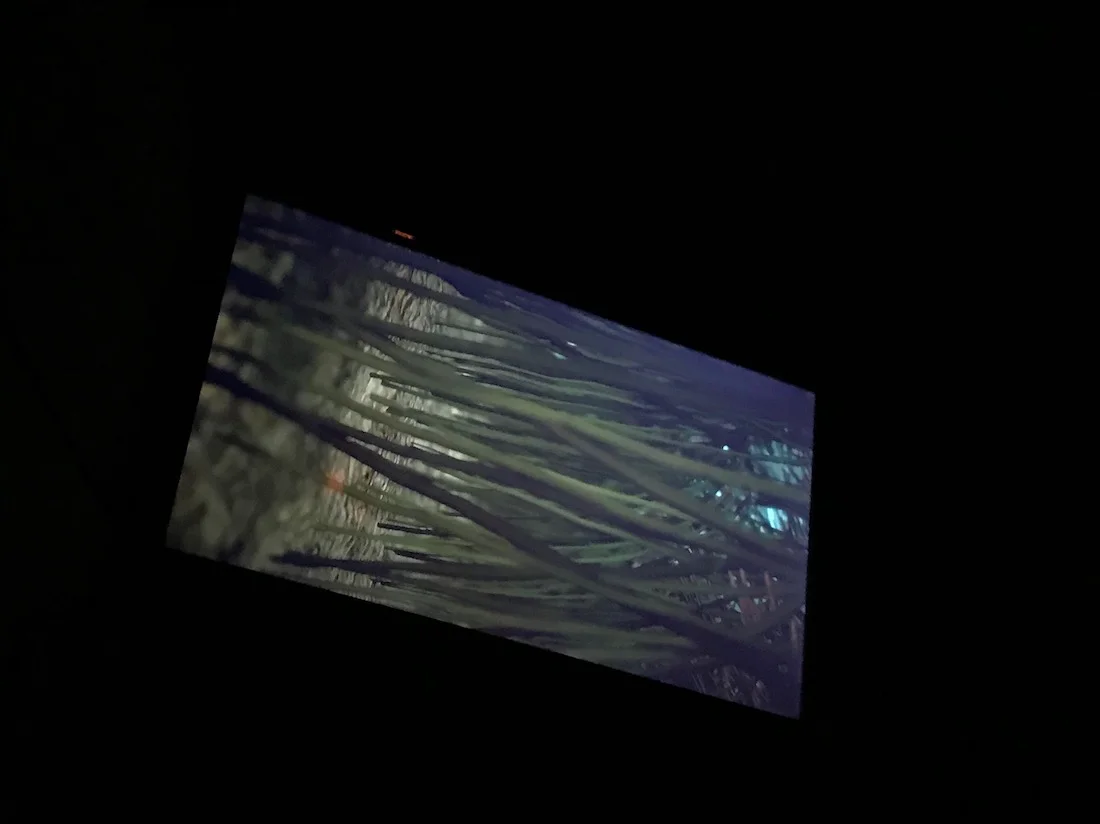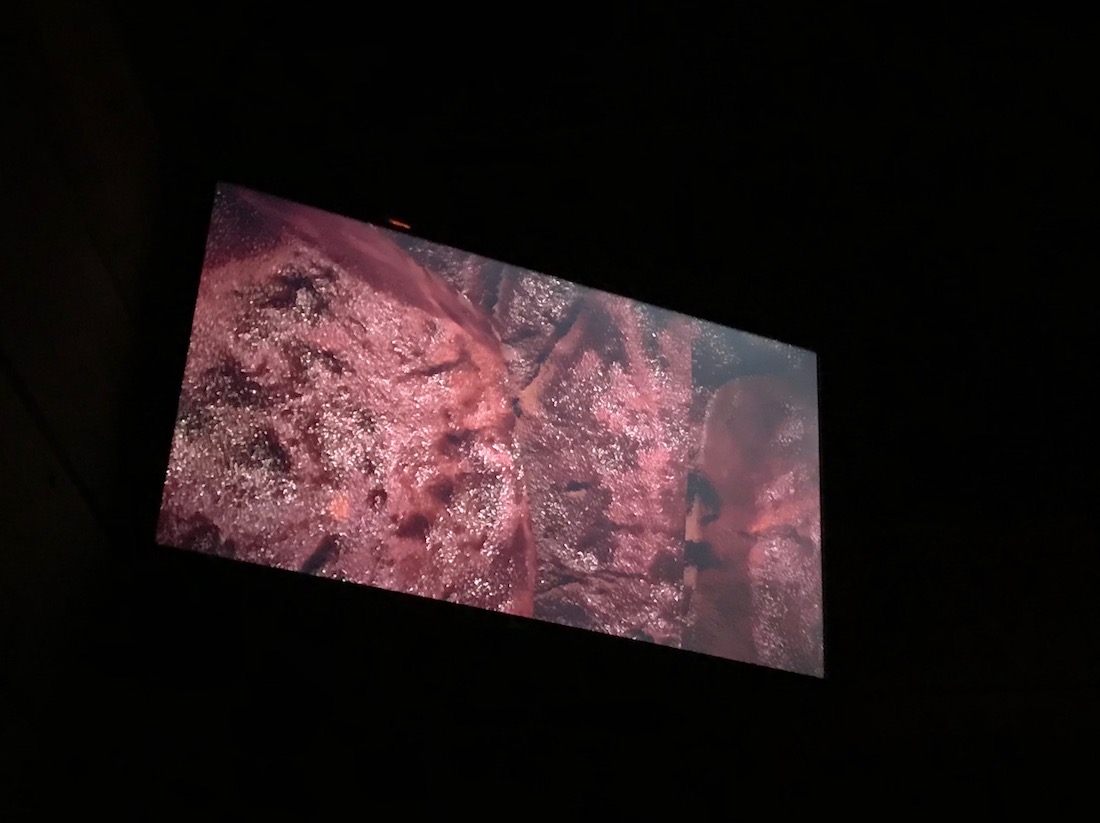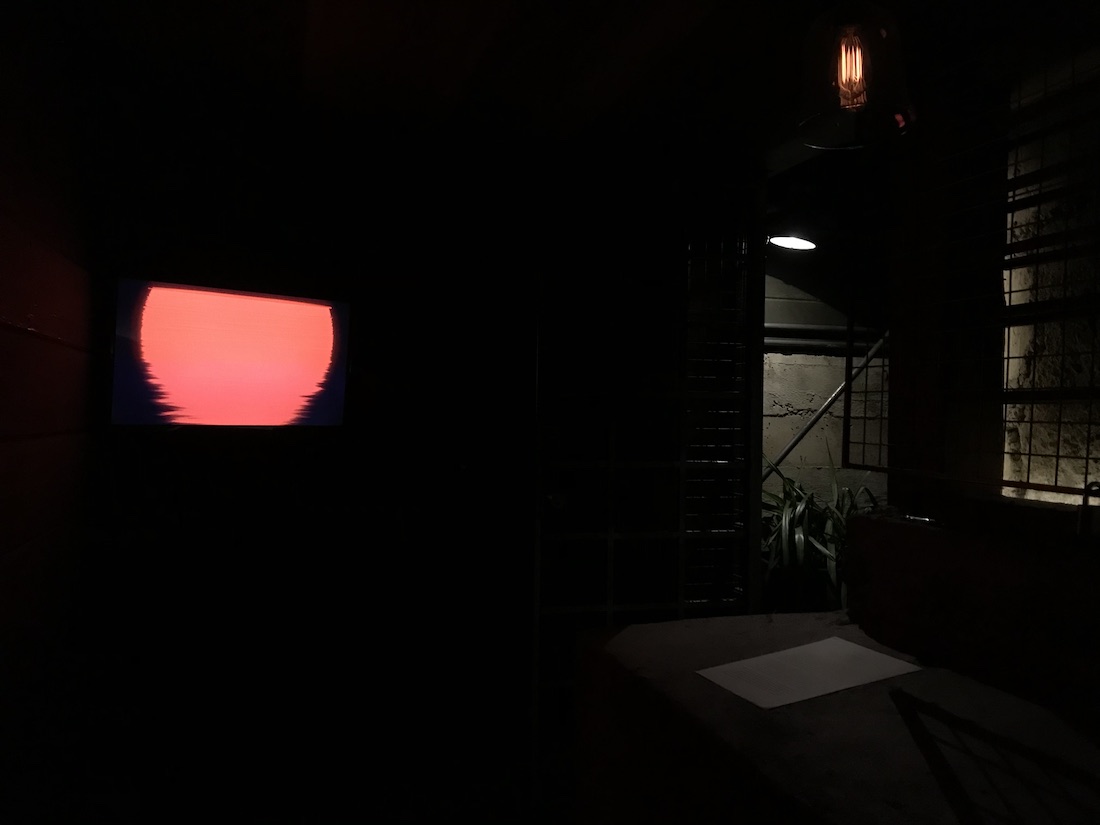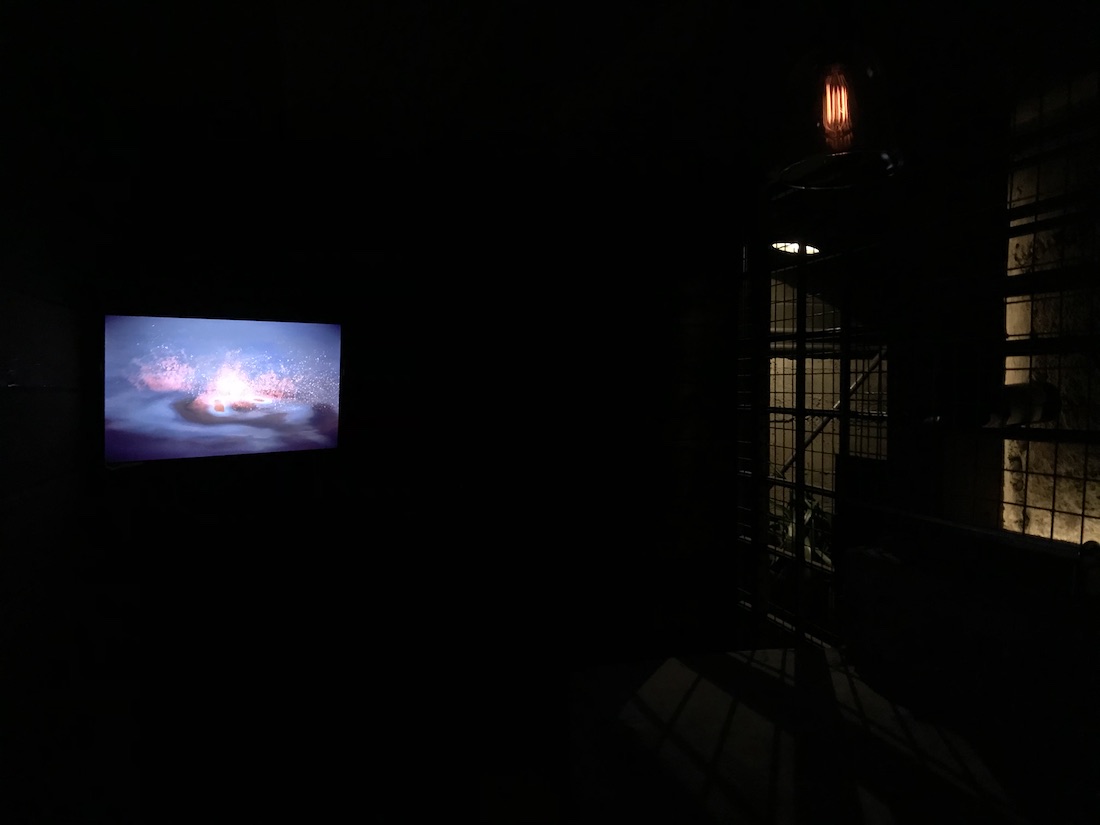Horizons
Dan Solberg
screening Tuesdays in February, 6-8PM
@
The Sleeper
Creating a game like Horizon Zero Dawn is a massive endeavor, entwining millions of dollars, creative teams across continents, and years of time. Visual assets situated right next to one another in the final game may have begun their lives half a world apart. The end product is an “open world” game compressed into the confines of an optical disc, literally flattening the contributions of dozens, if not hundreds, of hands into a singular palette. Recognizing this effort, the implementation of a photo mode in HZD may come off as an embedded marketing ploy to entice players to share images of the game with preloaded hashtags, but nonetheless the mode does prompt players to literally stop and admire carefully designed juxtapositions of digital veneer.
And yes, HZD is designed to be photogenic, so it’s no surprise that a photo mode yields all manner of crisp landscape shots and action portraits. Players can swivel the camera around protagonist Aloy, pose her, and add Instagram-inspired filters. You can select time of day, alter depth of field, and remove Aloy’s model from the scene altogether. You can even zoom in until the very stitching of the game is visible in pixels and polygonal seams. The level of player control in HZD’s photo mode allows for the potential to discover not only the smaller designed moments that one is likely to pass by in regular gameplay flow, but structural nuance that is oft never meant to be seen.
Graphical glitches can provide similarly reflexive moments in games, distorting the expected into broken nightmares that dispel the grand illusion of elaborate clockwork environs. But glitches are also mistakes: moments of malfunction that expose the hand of the designer and a blind spot in their construction process. In my Horizons video series, I utilized HZD’s photo mode in an attempt to find similarly revealing moments that don’t shatter a façade so much as employ its aesthetic sheen to discover and create depth within surface.
Horizons is a 12-part video montage of HZD photo mode recordings, focusing on special effects and elemental representations (fire, wind, water, etc.). The videos appear as abstract animations, based around simple craning and rotational camera movements. A shower of sparks manifests and disintegrates in proximity to the lens. Frozen images of fire attempt to remain properly centered as the camera spins overhead. Ice crystals rain from above before ascending to the stars as glowing pixels. The particle effects perform for the camera, highlighting the game’s player-centricity, which turns capturing the world and generating “natural” behaviors into one and the same.
HZD’s photo mode is a space out of time where only the movements of the camera belie a sense of duration. The reflection of a sunset races in place, unable to locate a path to recede below the titular horizon line. A sidelong roller coaster dive through a patch of tall grass builds entropy with no sign of release. Glistening boulders shift in parallax like a time lapse of tectonic plates.
It’s my intention that this process creates an additional layer of remove from HZD and its photo mode, and that the graphics represented in these videos are taken at face value. Because a photorealism wherein developers and players are able to make their own realities leaves photography as the only constant.




